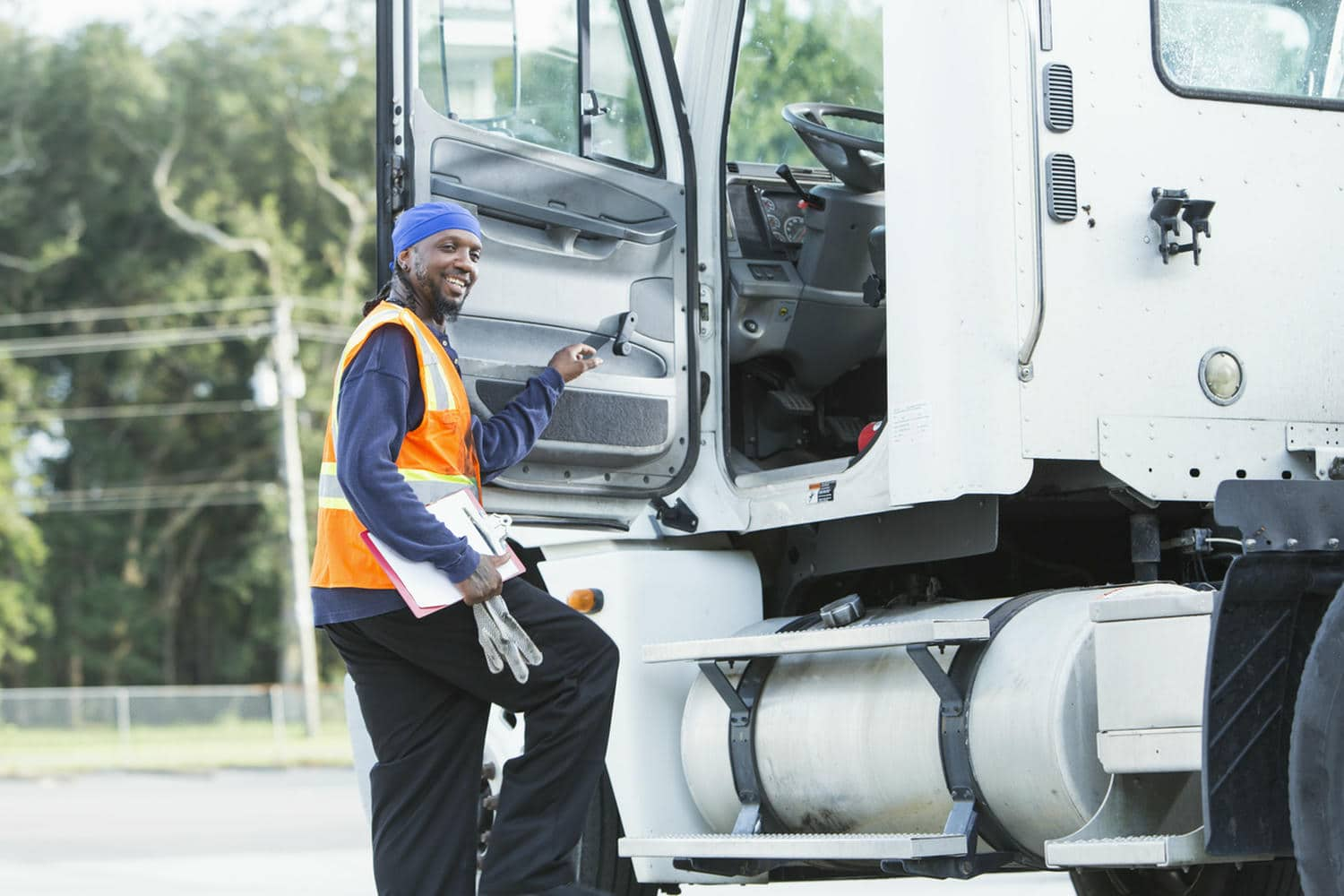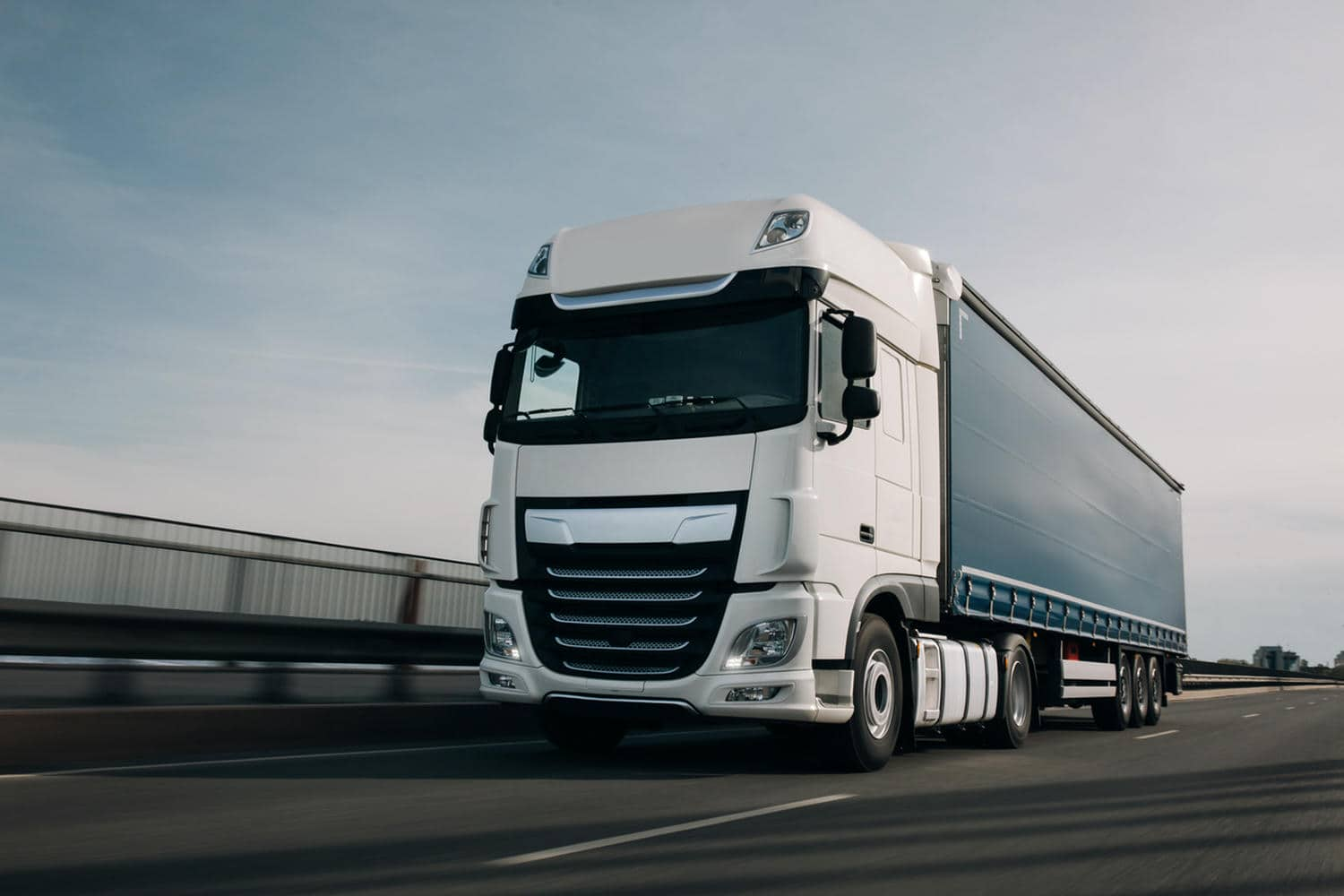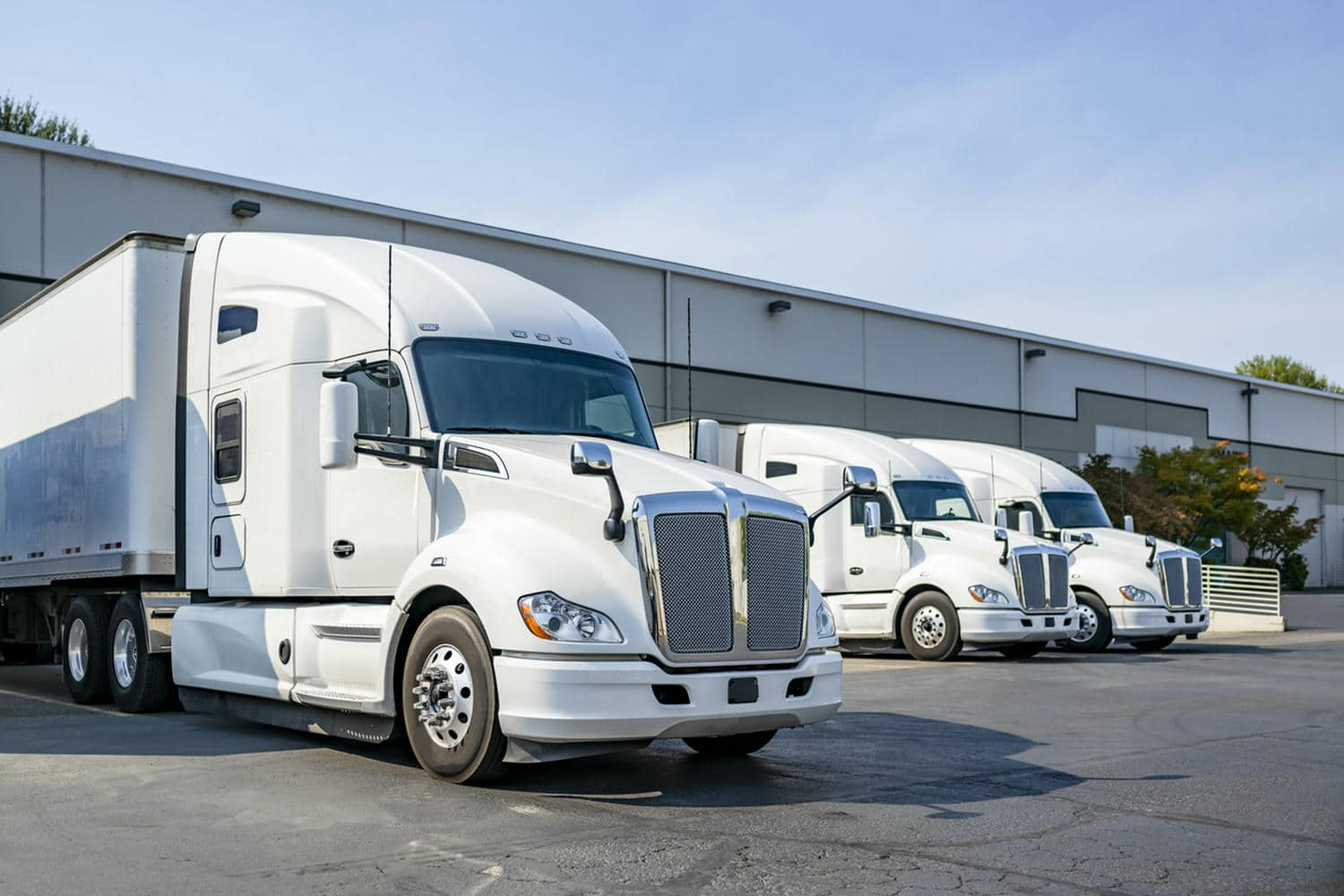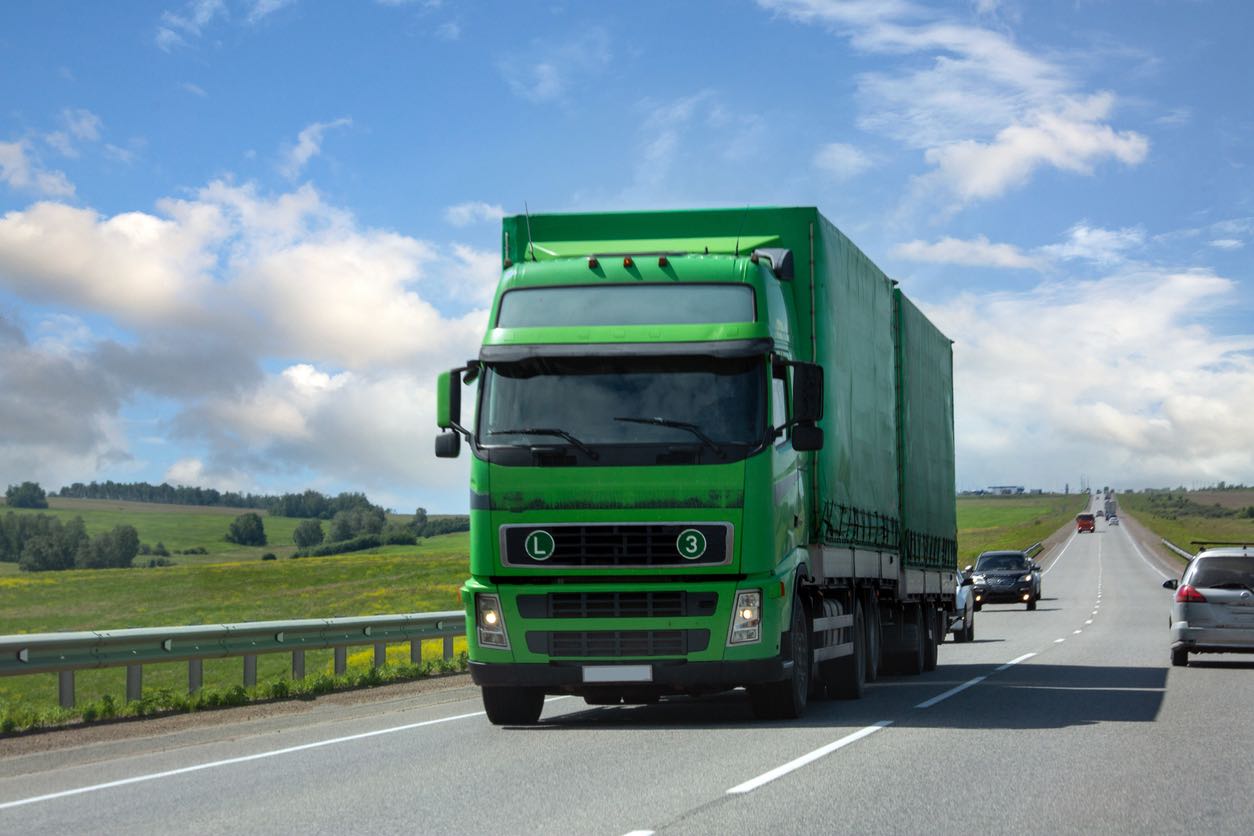Shipping a car is a process that many vehicle owners and businesses must navigate when relocating, selling, or transporting vehicles over long distances. With multiple shipping methods available, ranging from open transport to enclosed carriers and door-to-door services, decision-makers can often feel overwhelmed by the options. The choice depends on several factors, including the vehicle type, shipping costs, delivery time, insurance coverage, and the overall safety of the transport process. This article is designed to educate consumers and industry professionals on all aspects of car shipping and freight transport in a comprehensive manner. It covers the best available car shipping methods, key factors influencing the selection process, and expert tips on preparing your vehicle for transport.
Car shipping decisions are crucial because they directly affect the safety and timely delivery of your vehicle. In addition, understanding the nuances of different methods can help you avoid potential losses or damage. Consumers seeking to ship a car should be aware of the differences between methods such as open car transport and enclosed shipment, and should consider additional aspects like shipping time and insurance options. Furthermore, businesses that regularly ship cars require dependable carriers and shipper companies that provide transparent pricing and comprehensive customer service.
The purpose of this article is to break down the complex world of car shipping into easily understandable sections. We begin by exploring the main car shipping methods available, detailing when and why you might choose one method over another. Next, the focus shifts to the factors that should be considered when choosing a shipping method, such as cost, delivery time, vehicle type, distance, and insurance. Following that, we explain how to prepare your vehicle for shipping, including the inspection and maintenance process that ensures your vehicle is ready for transport. We then guide you through how to choose the best car shipping company by highlighting key qualities such as reliability, customer reviews, and real-time tracking technology. Finally, we address frequently asked questions regarding shipping costs, duration, and the pros and cons of available options.
Understanding the wide range of factors at play when shipping a car ensures you can make a well-informed decision. Whether you transport a luxury vehicle or a standard family car, ensuring the safe delivery of your vehicle with a method that meets your specific needs is paramount. This article not only provides detailed insights but also actionable recommendations that can be implemented immediately. Read on to learn everything you need to know on how to select the right car shipping method, strategically tailored for both individual consumers and businesses alike.
- Car shipping methods vary widely, with options such as open, enclosed, door-to-door, and terminal-to-terminal shipping.
- Key decision factors include shipping cost, delivery time, vehicle type, distance, and insurance coverage.
- Proper vehicle preparation, including thorough inspection and maintenance, is crucial for safe transit.
- Choosing a reliable shipping company with proven customer service and real-time tracking improves the overall experience.
- Geographic location and route logistics play a significant role in selecting the most effective shipping method.

Car shipping methods generally fall into four main categories, each with unique attributes that make them more suitable for certain situations. The primary types include open car shipping, enclosed car shipping, door-to-door shipping, and terminal-to-terminal shipping. These methods vary in cost, protection level, convenience, and logistical complexity.
Open car shipping is the most common and cost-effective method for transporting vehicles. In this method, your vehicle is loaded onto an open carrier, which is similar to the flatbed trailers used for general freight transportation. The open transport method suits most vehicles, including standard sedans, SUVs, and trucks, as it offers competitive pricing due to its high load density. Despite the vehicle being exposed to the elements, modern carriers are designed to secure vehicles safely during long-distance transit. In addition, open carriers are widely available across the United States, making scheduling and routing more flexible.
This method is best suited for everyday vehicles that are not high-value collectibles requiring extra protection. The minimal additional cost makes it an attractive option for customers prioritizing affordability. Open car shipping services are particularly popular among consumers who are relocating or selling a vehicle and do not want to incur the expenses associated with enclosed transport. With rigorous safety protocols and secure tie-downs, open shipping remains a reliable choice for most standard auto transport needs. Moreover, the technique has been streamlined by reputable auto transport companies, providing door-to-door pickup and delivery services that offer reliability and customer satisfaction.
Enclosed car shipping is the premium option for vehicle transport, offering enhanced protection by enclosing your car inside a fully covered trailer. This method is designed for high-value automobiles, classic cars, and luxury vehicles that demand extra care. The enclosed carrier protects the vehicle from weather conditions, road debris, and potential damage during transit. The enclosed environment significantly reduces the risk of scratches, dents, and other types of cosmetic damage.
For vehicle owners who value aesthetics and want to ensure that their car arrives in pristine condition, enclosed shipping is the optimal choice. Although this service comes at a higher cost, its extra benefits justify the expense when transporting vehicles of significant monetary or sentimental value. Additionally, enclosed carriers come equipped with advanced safety systems and have fewer stops on long-haul routes, which minimizes the overall risk of accidents. This method is often used by collectors and owners of classic vehicles where the condition is paramount.
Door-to-door car shipping provides the ultimate convenience by picking up your vehicle at your location and delivering it directly to your specified destination. This service minimizes the hassle for customers and is especially beneficial if you lack the transportation means to or from the terminal. Terminal-to-terminal shipping, on the other hand, requires you to drop off and pick up your vehicle at designated terminals. Although terminal services can be more affordable due to streamlined logistics, they demand additional travel on your part.
The decision between these two options often comes down to balancing convenience with cost. Door-to-door shipping is widely preferred by those willing to pay a premium for ease and reliability. Conversely, if you operate on a tighter budget or reside near a terminal, the terminal-to-terminal choice may be more logical. Evaluating factors like distance from terminals, your schedule, and the overall convenience helps make an informed decision. These choices also affect the overall shipping timeline and customer experience, with door-to-door methods often adding a layer of personalized service that terminal-to-terminal lacks.
International car shipping is a specialized service designed for customers moving vehicles across national borders. When considering cross-border shipments, factors such as legislation, customs regulations, import/export duties, and additional insurance requirements must be thoroughly researched. International shipping is notably more complex because it involves paperwork, inspections, and adherence to foreign standards and protocols.
This option is ideal for expatriates, collectors shipping rare vehicles internationally, and businesses that operate on a global scale. While the cost and regulatory aspects can make international car shipping more expensive, the assurance that your vehicle complies with international standards is invaluable. Offshore customers should select companies with a proven history in international vehicle transport to minimize delays and ensure compliance with local laws at the destination. Determining the right method for international shipping involves evaluating the logistical challenges and any potential delays from customs checkpoints. The overall experience is enhanced when partnering with experienced international auto transport companies that provide comprehensive tracking and customer service support.

When selecting a car shipping method, several factors must be balanced to ensure that the chosen option aligns with your needs, budget, and timeline. The decision-making process involves understanding the complex interplay between cost, delivery time, vehicle type, distance, and insurance. Each factor plays a significant role in determining the best shipping method for your specific circumstance.
Shipping cost is one of the most critical factors in selecting a car shipping method. The price can vary depending on the choice between open and enclosed transport, door-to-door versus terminal-to-terminal service, and domestic versus international shipping. For instance, open car shipping is generally the most economical option, making it ideal for day-to-day vehicles where protection beyond standard safety measures is not a priority. Factors contributing to cost include fuel prices, route complexity, carrier availability, and seasonal demand fluctuations. Customers should request accurate car shipping quotes to compare services, ensuring transparency and understanding of what is included in the price. Budget-conscious consumers might prioritize cost-saving options but should weigh these savings against potential risks. Detailed cost evaluations can significantly aid your decision-making process and prevent subsequent financial surprises associated with additional fees or surcharges during transit.
The delivery time of vehicle shipping is a major consideration for many customers, especially if the car is needed urgently for business or personal use. Shipping time is influenced by several factors including the distance to be traveled, the type of shipping method chosen, and the current demand on the shipping network. Faster delivery times often require premium services, such as expedited door-to-door shipping, which may come with higher costs. Conversely, if your schedule allows, choosing a standard shipping option can be a more cost-effective strategy. Estimations of shipping duration often factor in weather conditions, traffic delays, and processing times at shipping hubs. It is important for consumers to confirm expected delivery windows with their chosen auto transport company to avoid inconvenient delays or disruptions to their plans.
The type of vehicle is a critical determinant in selecting the appropriate shipping method. For instance, classic cars, luxury vehicles, or newly purchased high-end models might benefit from the added protection of enclosed shipping. On the other hand, mainstream models, SUVs, and trucks are often well-suited for open car transportation. Additionally, specialized vehicles such as motorcycles may require carrier systems specifically designed for smaller two-wheeled transport. Understanding your vehicle’s age, value, and overall condition will guide you in choosing a method that minimizes risk. This assessment also extends to the physical dimensions and weight as factors that impact shipping carrier compatibility. Vehicle type influences the choice between methods not only in terms of cost but also in ensuring that the transport method aligns with the necessary safety and protection standards associated with its use and value.
The distance over which your vehicle must be transported plays an integral role in the shipping method’s overall effectiveness and cost. Shorter distances might allow for more flexible and affordable configurations such as terminal-to-terminal shipping. In contrast, long-distance shipments often require more robust logistics planning, especially for cross-country or international moves. The total mileage can affect fuel consumption costs, the likelihood of interim stops, and the complexity of routing. It also influences the potential risks the vehicle may face during transportation—longer journeys expose your vehicle to varying weather conditions, different road types, and increased handling. Efficient route planning and an understanding of mileage impacts are essential for evaluating the suitability of your chosen shipping method, ensuring that vehicle safety and delivery times remain optimal.
Insurance coverage is a non-negotiable aspect of car shipping that ensures your vehicle is protected against unexpected incidents during transit. A robust insurance policy not only covers physical damage due to accidents or mishandling but also provides peace of mind knowing that repair costs or losses are minimized. Different shipping methods may include varying levels of insurance coverage, and it is important to understand the specifics of your chosen option. For instance, reputable auto transport companies typically offer insurance coverage that meets, and sometimes exceeds, federal and state requirements. Additional coverage can be purchased for high-value vehicles or special circumstances, such as international shipping where extra documentation and compliance measures are necessary. Evaluating insurance policies involves reading the fine print on liability terms, deductibles, and claim procedures. An informed choice about insurance helps safeguard your investment and ensures that you can recover losses quickly should an unexpected event occur during shipping.
For more information regarding car shipping costs, read our previous blog post Factors Impacting Car Shipping Costs You Must Know.

Preparation is a critical step in ensuring that your shipped vehicle arrives safely and in the expected condition. Proper preparation involves both mechanical checks and thorough cleaning to identify existing damage and provide a baseline for inspection upon delivery. Ensuring your vehicle is in good working order minimizes the risk of mechanical failures during transit. Additionally, a well-prepared vehicle can lead to more accurate carrier quotes and smoother insurance claim processing if needed.
Before shipping, vehicle inspections are essential to document your car’s current condition. Inspection involves a systematic examination of the exterior and interior, taking note of any pre-existing scratches, dents, or other damages. Many auto transport companies provide a vehicle condition report that becomes part of the shipping documentation. Such inspections often include photographing specific angles of the vehicle to serve as evidence for both the customer and the shipping company. These pre-shipment conditions help to account for any changes that may occur during transport. In practical terms, both the vehicle owner and the transport company review the inspection report before and after shipping, ensuring that any new damage is immediately flagged and addressed in accordance with the insurance policies in place.
A comprehensive vehicle preparation checklist is key to ensuring nothing important is overlooked before shipping your car. This checklist should include: – A complete cleaning of the car, both inside and out, so that any existing damage is visible. – Removing all personal belongings from the vehicle, as these items are typically not covered by insurance. – Ensuring the fuel level is at an optimal level (usually around a quarter tank) to reduce weight and risk. – Checking tire pressure and fluid levels to minimize issues during loading and transit. – Documenting current mileage and condition with photographs. – Verifying that any aftermarket parts or accessories are secure or temporarily removed.
Taking the time to follow a detailed checklist improves safety during shipping and makes it easier to resolve any disputes regarding condition. It also facilitates smoother logistics because a vehicle in ready condition avoids delays during loading and unloading processes.
Removing personal belongings from your vehicle prior to shipping is essential for several reasons. Firstly, most shipping companies have strict policies that prohibit personal items, as these items are not covered under the carrier’s insurance policy. This means any valuable or sentimental items left in the car could be at risk during transport. Secondly, clutter can interfere with the loading and unloading process, potentially leading to scratches or damage to the interior. Moreover, personal items can become loose and cause distractions to drivers during the shipping process. For these reasons, it is strongly recommended that you clear out your vehicle completely to ensure a smooth, secure, and dispute-free transport experience.
Proper maintenance prior to shipping ensures that your vehicle is fully operational when delivered. This includes tasks such as an oil change, tire rotation, and checking that fluid levels are adequate. Ensuring that your engine, brakes, and battery are in optimal condition minimizes the risk of mechanical issues that could cause delays or additional charges during the shipping process. Regular maintenance not only preserves the lifespan of the vehicle but also provides a level of assurance for the transport company that the vehicle is safe to load and secure properly. Furthermore, a pre-shipment maintenance check may be necessary to meet the specific requirements of some shipping contracts.

Selecting the right car shipping company is as important as choosing the shipping method itself. An excellent shipping company can dramatically affect the overall experience by providing transparency, meticulous care, timely delivery, and effective communication. To choose the best car shipping company, consumers need to evaluate factors like company reputation, customer reviews, insurance and liability policies, and the availability of modern tracking technologies. Trustworthy companies not only offer competitive prices but also have a track record of reliability and high customer satisfaction ratings.
A reliable car shipping company possesses several key qualities that ensure your vehicle is transported safely and efficiently. Transparency in pricing and clear communication regarding the shipping process is crucial. Trustworthy companies are fully licensed and insured and provide comprehensive carrier background checks. They tend to be customer-focused, ensuring that regular updates are provided throughout the shipping process. Additionally, companies that use state-of-the-art tracking systems allow car owners to monitor their shipment in real-time, providing additional reassurance and accountability. High levels of customer satisfaction and positive reviews are further indicators of a company’s reliability and commitment to quality service.
Customer reviews and testimonials offer critical insights into the performance and reliability of a car shipping company. By reading feedback from previous customers, prospective clients can assess aspects such as punctuality, communication, care during transport, and overall satisfaction levels. Reviews that highlight consistent quality, timely delivery, and proactive customer service contribute to building trust in the shipping company. On the other hand, recurring negative comments about damage or poor service quality can serve as red flags. Using aggregate review scores from multiple platforms allows you to make a more informed investigation into a company’s reputation. Reviews, when combined with industry credentials and independent safety ratings, are invaluable for evaluating the company’s track record.
When choosing a shipping company, understanding the levels of insurance and liability they offer is paramount. A reputable auto transport company should provide clear details about insurance coverage, including what types of damage are covered and under what circumstances. Liability policies differ across providers and can have a significant impact on resolving disputes if the vehicle sustains damage during transit. It is essential to verify that the company’s insurance policy meets or exceeds the state and federal requirements, and that supplementary insurance options are available for high-value vehicles. An in-depth understanding of these details during the selection process helps ensure that your vehicle is adequately protected against unforeseen errors or accidents.
Real-time tracking technology significantly enhances the car shipping experience by providing continuous updates on your vehicle’s location. This feature not only offers peace of mind but also allows you to coordinate timely delivery and make logistical adjustments if unforeseen delays occur. With real-time tracking, customers can monitor their car’s progress through a web-based interface or mobile app, receive alerts when milestones are reached, and access detailed travel logs. This transparency builds trust and reduces the stress associated with shipping, as the entire process is made more predictable. Being able to view live updates allows both the carrier and the customer to proactively address any issues that arise, ultimately leading to improved customer satisfaction.

To ensure potential customers are well-informed about the intricacies of vehicle transport, several frequent questions often arise. These queries touch on cost efficiency, shipping duration, preparation steps, and the comparative advantages of different shipping methods. Addressing these FAQs clearly and concisely is crucial for helping customers make informed decisions and avoid common pitfalls associated with vehicle transport. Below, we answer some of the most common questions to provide clarity and reassurance.
The cheapest way to ship a car typically involves opting for open auto transport, as it requires less specialized equipment and offers higher load densities. Open car shipping is less costly compared to enclosed options because it exposes the vehicle to the elements and does not require extra protective measures. This method, while more budget-friendly, still maintains high safety standards provided by reputable carriers. Customers seeking the most affordable option are encouraged to compare quotes, as the prices can vary based on distance, timing, and seasonal factors.
The cost to ship a car depends on several factors including the shipping method, distance to be covered, type of vehicle, and the level of service required. On average, open auto transport tends to be more budget-friendly, with costs ranging from a few hundred dollars on short routes to over a thousand dollars on coast-to-coast shipments. Enclosed shipping typically incurs higher fees due to the added protection and specialized carriers involved. Additional costs may also arise from expedited services, insurance enhancements, and tolls or fees related to long-distance transport.
Shipping duration varies based on the selected method, route complexity, and external factors such as weather and traffic conditions. Typically, vehicle shipping can take anywhere from several days to a few weeks. Domestic trips might be completed within one to two weeks on average, while more intricate routes or international shipping can extend the timeline. Customers should always request a delivery estimate from their chosen shipping company and factor in any potential delays that may impact overall transit time.
Preparing your car for shipping is crucial for ensuring a smooth, damage-free delivery. The process includes a thorough cleaning, comprehensive vehicle inspection with photos to document its current condition, and removal of all personal belongings. Additionally, confirming that the vehicle is in good working order with checked fluid levels, proper tire pressure, and no active mechanical issues is important. Following a detailed vehicle preparation checklist not only ensures the safety of your car during transit but also facilitates a straightforward issue resolution process should any discrepancies arise upon delivery.
Open auto transport offers the advantage of being more economical due to its high load density and lower operating costs, making it a popular choice for everyday vehicles. However, the main drawback is that the vehicle is exposed to weather and road debris. Enclosed car shipping, by contrast, provides superior protection and is ideal for high-value or classic vehicles, yet it comes at a premium cost. Consumers must balance the need for cost savings against the level of protection required, taking into account the value and sensitivity of their vehicle.
Geographical factors significantly impact the selection of a shipping method. The starting and destination points, along with the overall route, influence costs, available routes, and delivery times. Urban areas may have more shipping options with better service frequency, whereas rural locations might require terminal-to-terminal shipping due to limited direct service availability. Moreover, inter-state and international routes introduce additional logistical complexities such as customs duties, varied local regulations, and specific route constraints that can alter the overall shipping plan.
Shipping from city to city generally offers more robust shipping options, with many carriers providing door-to-door services between major urban centers. This tends to result in enhanced service frequency and competitive quotes. In metropolitan areas, logistics are often streamlined, offering a level of convenience that reduces transit time. Additionally, the high density of available carriers in cities allows for greater flexibility in scheduling and route planning, impacting both cost and delivery reliability favorably.
State-to-state car shipping involves navigating different state regulations, which can influence how and where your vehicle is picked up and delivered. Various states may have unique compliance requirements or weight restrictions that can affect shipping logistics. Customers should verify that the selected auto transport company is fully compliant with all state laws and is experienced in managing inter-state shipments. Considerations might include differing toll systems, local licensing and permit needs, and regional weather patterns. Awareness of these factors ensures that state-to-state shipments are both safe and efficient.
International car shipping differs significantly from domestic shipping in terms of customs, regulatory compliance, and documentation requirements. Shipping a vehicle across national borders requires meticulous preparation, including obtaining export documents, complying with customs regulations, and sometimes even securing additional insurance coverage specific to international transit. Transit times are generally longer, and the logistical process is more complex. Furthermore, international shipping may involve additional fees such as tariffs and port handling costs. It is critical to work with an experienced provider who specializes in cross-border transport when shipping internationally.

Comparing car shipping methods requires a multi-dimensional approach that takes into account cost, delivery time, safety, and overall service quality. Utilizing comparison tables and detailed infographics can help synthesize the pros and cons of each method, enabling consumers to make well-informed decisions. By examining each method side by side, one can assess which option offers the best balance of protection, speed, and affordability based on individual priorities and vehicle-specific requirements.
Each shipping method comes with distinct advantages and disadvantages. Open transport is economically favorable and widely available, while enclosed shipping offers unmatched protection at a higher cost. Door-to-door services provide maximum convenience, whereas terminal-to-terminal shipping may be more cost-effective for customers who live near designated hubs. International shipping presents additional challenges but is necessary for cross-border moves. Evaluating these aspects critically helps consumers identify which method aligns best with their specific needs and constraints.
Cost, delivery time, and safety are the three pillars upon which shipping methods are evaluated. Cost considerations include not only the base rate but also additional surcharges such as insurance and fuel expenses. Delivery time is influenced by the selected route and method, with expedited services available for those who prioritize speed. Safety encompasses vehicle protection, insurance policies, and the overall reputation of the carrier. A detailed comparison often reveals that while one method may be cheaper, it might come with longer transit times or higher exposure to risk. A careful balance must be struck by comparing quantitative estimates and qualitative factors provided by reputable carriers.
The optimal shipping method varies considerably with vehicle type. Standard sedans, minivans, and SUVs usually perform well with open transport due to cost-effectiveness and widespread availability. In contrast, classic, luxury, or high-value vehicles require the enhanced protection of enclosed shipping to preserve their condition. Specialty vehicles such as motorcycles may necessitate dedicated carriers designed to fit their size and shape. Additionally, oversized or commercial vehicles might need specialized equipment and routes to accommodate their dimensions. Researching and matching shipping methods to your specific vehicle type improves safety and cost efficiency during transport.
Comparison tables and infographics provide a visual summary of each car shipping method’s features and trade-offs, making it easier for consumers to decide based on key criteria. For example, a table comparing cost, time, insurance coverage, and safety measures across open, enclosed, door-to-door, and terminal-to-terminal shipping offers a clear, side-by-side analysis. Infographics can also highlight trends, such as how delivery times fluctuate with seasonal changes or the impact of distance on shipping costs. These visual aids are particularly useful for quick reference and decision-making, enabling customers to easily digest complex information and choose the most suitable option.
Below is an example table comparing the main attributes of various car shipping methods:
Shipping Method | Cost Factor | Delivery Time | Safety Level | Ideal Vehicle Type |
|---|---|---|---|---|
Open Car Shipping | Low | Moderate | Standard protection | Daily use vehicles (sedans, SUVs) |
Enclosed Car Shipping | High | Moderate | Superior protection | Luxury, classic, high-value vehicles |
Door-to-Door Shipping | Moderate to High | Faster | High overall service | All types, when convenience is key |
Terminal-to-Terminal | Low to Moderate | Variable | Standard protection | Standard vehicles, if near terminals |
This table provides a snapshot of how each method compares. By evaluating each attribute in relation to your specific needs, such as balancing cost and safety for a cherished vehicle, you can decisively choose the optimal shipping method.

Q: What factors should I prioritize when choosing a car shipping method? A: When choosing a car shipping method, prioritize cost, safety, and delivery time. Consider the value and type of your vehicle; high-value vehicles may require enclosed transport for added protection, while everyday vehicles are often well-suited for open car shipping. Additionally, think about convenience and the level of insurance coverage provided by the carrier.
Q: Is open car shipping safe for my vehicle? A: Yes, open car shipping is generally safe for most vehicles. Reputable carriers use secure tie-downs and adhere to strict safety protocols. However, since the vehicle is exposed to the elements, it may not be ideal for high-value or classic cars, which might better benefit from the extra protection provided by enclosed shipping.
Q: How do I prepare my car for shipping? A: Preparations include cleaning the car, documenting its current condition with photographs, and removing all personal belongings. Additionally, ensure that the car is in good mechanical condition by checking tire pressure, fluid levels, and battery status. Following a detailed checklist minimizes the risk of disputes regarding vehicle condition upon delivery.
Q: Can I track my vehicle during shipping? A: Many auto transport companies offer real-time tracking services that allow you to monitor your vehicle’s location and status throughout the shipping process. This transparency provides peace of mind, as you can receive updates on progress and estimated delivery times via web-based interfaces or mobile apps.
Q: What additional insurance options are available for car shipping? A: While most shipping companies provide basic insurance coverage, you may opt for additional coverage if you are shipping a high-value or classic vehicle. It is important to review the insurance policy provided by your carrier and discuss supplemental options to ensure comprehensive protection. Additional coverage can help protect against any unforeseen incidents during transit.

Selecting the right car shipping method requires balancing multiple factors such as cost, delivery time, vehicle type, distance, and insurance coverage. By understanding the nuances of open versus enclosed transport and the differences between door-to-door and terminal-to-terminal shipping, consumers can make informed decisions. Preparation of your vehicle plays a critical role in ensuring a smooth and damage-free transport process. Ultimately, choosing a reliable auto transport company that offers transparent pricing, advanced tracking, and excellent customer service is essential for a stress-free shipping experience.
Whether you are relocating across the country or shipping a high-value vehicle internationally, careful consideration of your shipping method can save time, money, and potential heartache. Educate yourself on all the variables, use comparison tools, and ask the right questions to ensure your vehicle is treated with the attention and care it deserves. This comprehensive guide has provided the essential insights and actionable steps to help you navigate the complex world of car shipping with confidence.
When it comes time to ship a car, choosing Ship A Car, Inc. means placing your vehicle in the hands of industry-leading experts with a proven track record for safety, reliability, and superior customer care. With over a decade of experience, SAC offers multiple shipping methods—from open and enclosed carriers to door-to-door services—customized to fit your needs and budget. Their team is committed to helping every customer make an informed decision, providing transparent pricing, comprehensive insurance coverage, and real-time tracking throughout the entire process. Whether you’re moving, selling, or protecting a high-value automobile, Ship A Car, Inc. ensures that your vehicle is transported efficiently and arrives in pristine condition. Don’t leave your car’s journey to chance—call (866) 821-4555 now for a custom quote or use our online auto transport calculator for a fast and accurate estimate tailored to your situation.




